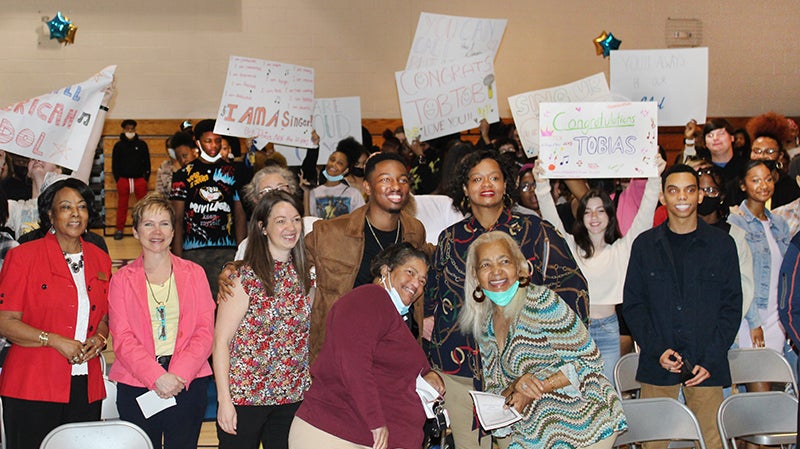Roanoke Electric awarded $6 million
Published 9:03 am Tuesday, October 28, 2014
AHOSKIE – Roanoke Electric Cooperative is one of the first two rural co-ops nationally to receive finds from a new program of the Rural Utilities Service.
On Friday, U.S. Secretary of Agriculture Tom Vilsack announced that REC is the recipient of a $6 million loan that will be used to finance improvements to the energy performance of utility customers’ homes and businesses.
Around noon on Friday, First District U.S. Congressman G.K. Butterfield arrived at the REC office to present a check in the amount of $6 million.
According to Curtis Wynn, CEO of Roanoke EMC, the $6 million loan will be used to launch a voluntary program, “Upgrade to Save.” That program, Wynn said, makes investments in energy efficiency that will allow cooperative members to save money on their bills without making an up-front payment or incurring a new consumer debt obligation. In turn, participants will agree to pay a voluntary tariff on their bill that shares the energy efficiency savings with the utility at a level that assures both immediate savings for the program participants and full cost recovery for the utility.
“Now we can open access to low cost capital for all cost-effective energy efficiency improvements sought by members with sound bill payment history, regardless of income, credit score, or status as renters or homeowners,” Wynn explained. “This is an important breakthrough for our members because when we worked with a local credit union to offer consumer loans for energy efficiency, we found that few of our members who most wanted energy efficiency upgrades could take on a loan.”
The Upgrade to Save program is based on the Pay As You Save® system (PAYS®) developed by the Energy Efficiency Institute of Vermont. PAYS is the basis for the design of low cost, debt-free, on-bill financing programs that have been successfully operated by Midwest Energy in Kansas and utilities in eastern Kentucky partnering with the Mountain Association for Community Economic Development.
Based on experience with these energy efficiency financing programs, the average investment per home is approximately $7,000 with an average annual savings of 25 percent.
“We are proud to be among the first to benefit from this new RUS program because our cooperative is committed to delivering affordable energy services, including energy efficiency,” Wynn noted. “With this financing we will be able to make investments that cut waste, reduce costs, support our local economy, and improve the quality and comfort of the homes and businesses we serve.”
The new Energy Efficiency & Conservation Loan Program draws on the same $6 billion in unsubsidized Treasury rate loans available each year through the RUS Electric Program. Now for the first time, non-profit utilities serving rural areas can use that financing to make capital investments on the customer’s side of the meter, such as energy efficiency improvements, distributed renewable energy systems, and smart grid solutions.
Roanoke EMC and North Arkansas Electric Cooperative are the first two utilities to receive financing under the new program.
Roanoke EMC is an electric utility providing service to 14,000 members in Bertie, Hertford, Halifax, Northampton, Gates, Perquimans and Chowan counties. As an electric cooperative, Roanoke EMC is committed to cooperative principles: voluntary and open membership, democratic member control, member economic participation, autonomy and independence, education, training and information, and concern for community.
For more information, visit www.roanokeelectric.com/UpgradeToSave.


